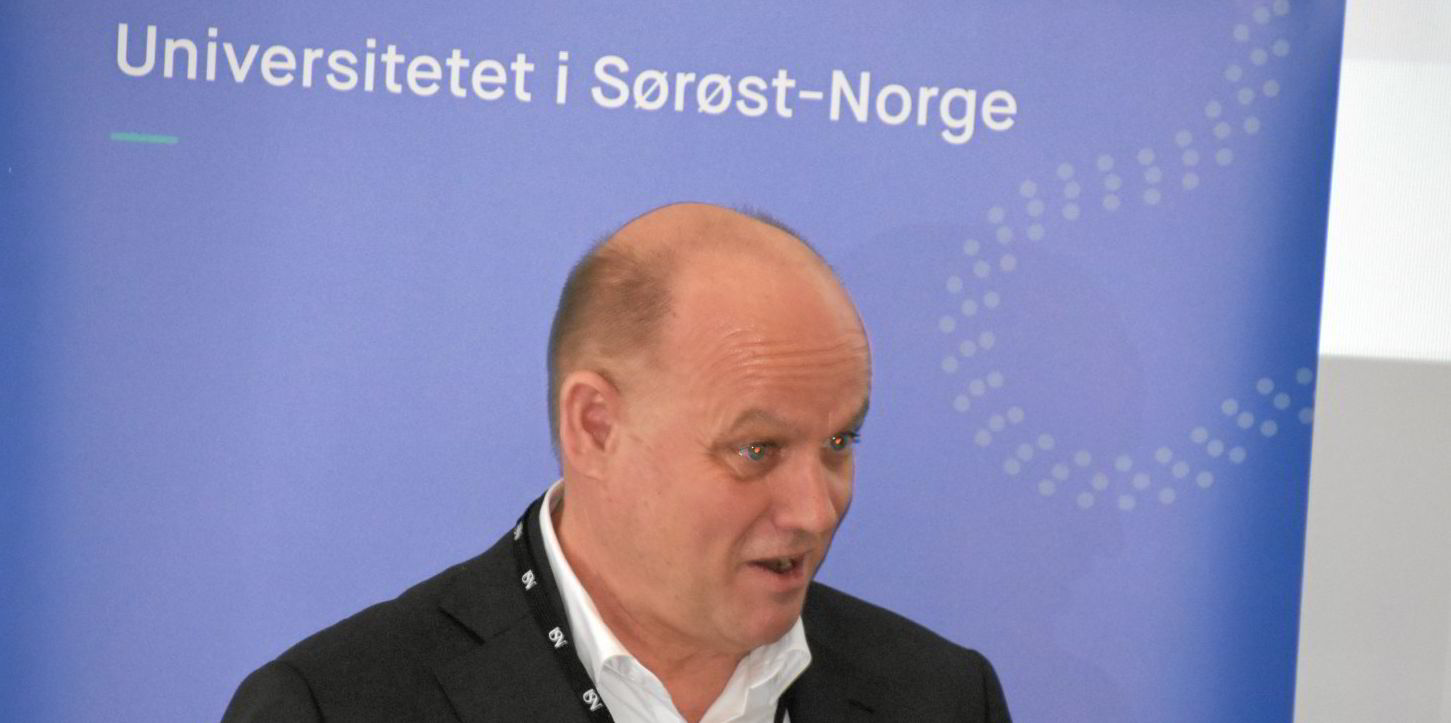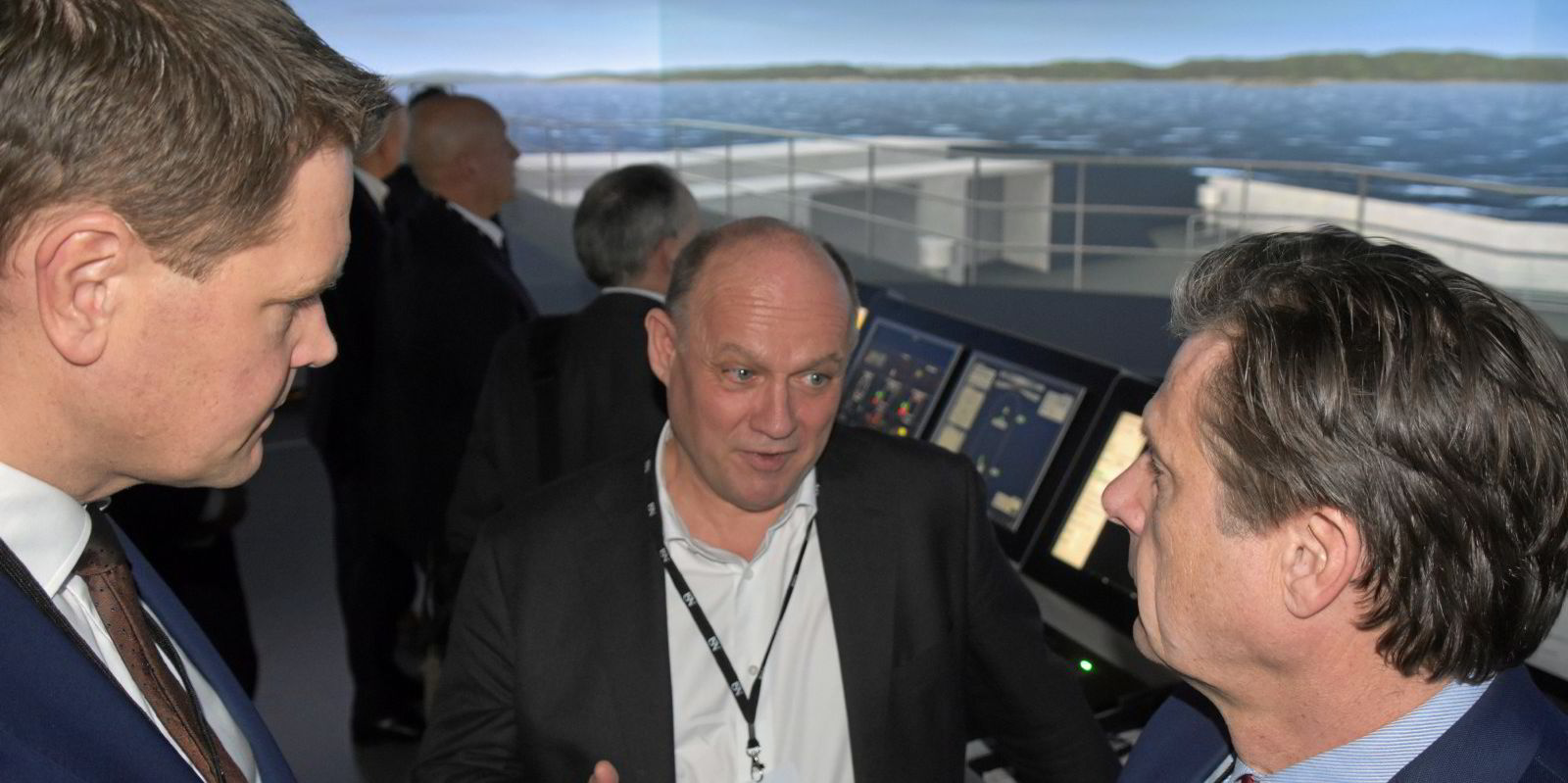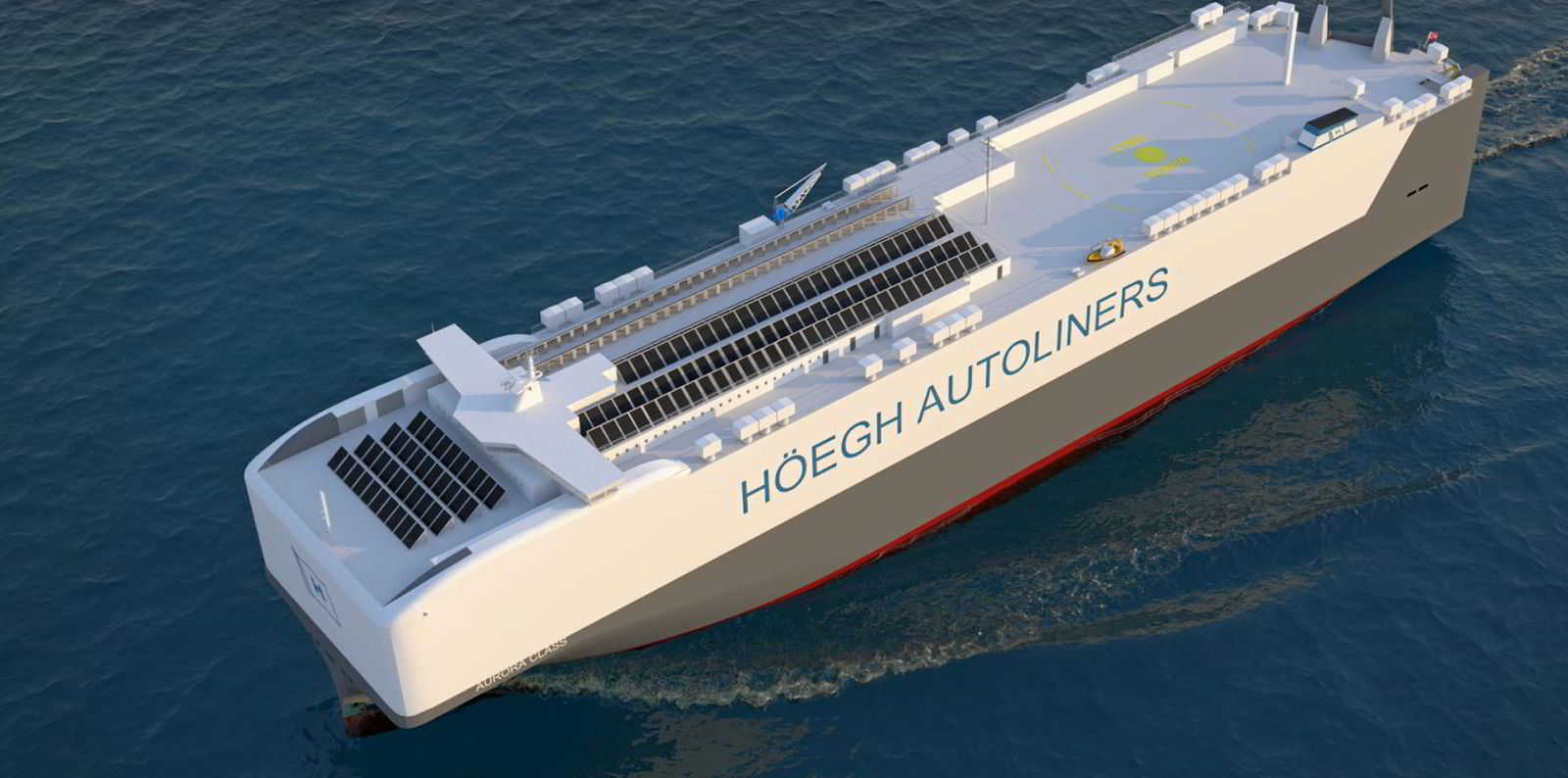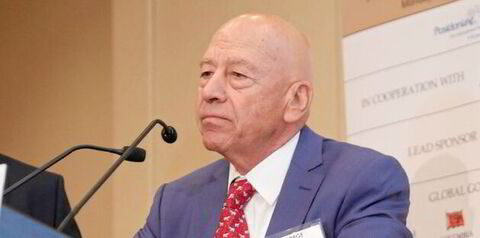Hoegh Autoliners expects to build its next round of four large dual-fuel car carriers as ammonia-diesel burners, and skip LNG entirely as a fuel source.
The development comes after engine maker MAN Energy Solutions said it can deliver large ammonia-burning marine engines by the fourth quarter of 2024.
That will come in time for installation in ships nine to 12 in the series of 9,100-ceu car carriers under construction at China Merchants Heavy Industry Jiangsu (CMHI Jiangsu).
The ammonia-diesel quartet would be on the water by 2026.
The Norwegian owner’s original expectation had been to build the upcoming set of option ships as dual-fuel LNG-diesel burners and convert the LNG fuel train and fuel injection systems to ammonia within five or 10 years.
“When we designed those ships, we were totally obsessed with LNG,” Hoegh Autoliners chief executive Andreas Enger told TradeWinds. “But the developments with ammonia went much faster than we had expected…”
The news represents a breakthrough in the feasibility of ammonia as a marine fuel.
Enger and MAN Energy Solutions Norway managing director Erik Dahl announced it at a conference on 19 January at the University of South-Eastern Norway.
Hoegh Autoliners and Kongsberg Digital convened the conference to present Norwegian industry partners with a simulated version of the new Hoegh Aurora class of vessels, which Enger touted as “the world’s biggest and the world’s greenest”.
Enger and Dahl acknowledged that technical problems with the ammonia-diesel hardware remain.
These have to do with the safe use of deadly ammonia fuel, but even more with the challenge of controlling greenhouse emissions. Ammonia combustion releases NOx, which has a climate effect 265 times worse than CO2.
Still, crew safety and emissions are technically soluble problems, the two men told TradeWinds.
No retrofits
Installing ammonia-diesel fuel trains from the start will enable Hoegh Autoliners to skip an expected five to 10 years of running the new ships on gas, and also save millions per ship by not having to bring the four ships into yards for retrofits.
This, however, is hard to price precisely.

“The conversion kit for ammonia fuel retrofits is not something that exists yet,” Enger said.
Now that the ammonia option looks feasible by 2024, the company can drop LNG fuel tanks and pipes and install ammonia tanks and pipes instead.
Either system would add $5m to $10m to the price of the ship, although the ammonia system would be higher within that range.
The same applies to installing ammonia fuel injection systems from the outset.
Today’s car carrier market remains severely constrained by ship supply, with end-users lining up to sign contracts at extremely lucrative rates, at least until the current orderbook starts to deliver.
Analysts consider the ship shortage unlikely to be reversed quickly, given a wait of maybe four years before the specialist yards that build car carriers are able to put new tonnage on the water, and the unlikelihood that inexperienced yards will casually enter the car carrier market.
Hoegh Autoliners was one of the early movers, and one that made decarbonisation a priority. Starting with a January 2022 order of four ships, it has grown its Aurora-class series at CMHI Jiangsu to eight firm ships and two sets of four options. The next declaration is in late July.
As option holder, Hoegh Autoliners has no reason to hurry.
“We wouldn’t get the ships any earlier or at a different price by declaring sooner, so there would only be downside if we did. But our ambition is to declare those options,” Enger told TradeWinds.
Originally, the biggest question mark for declaring options was financial, he added. Liquidity and credit are no longer an issue with a stock market listing and a balance sheet bolstered by the past year’s charter earnings.
With finance doubts out of the way, MAN Energy Solutions’ progress with ammonia makes the options more attractive, barring technical developments that would make it necessary to adjust the newbuilding design, or unforeseen developments in the car carrier market.
But the demand outlook remains strong, Enger believes, and oversupply is unlikely because the number of yards able and willing to build car carriers is limited, and because the veteran vessels in today’s fleet will be under pressure from decarbonisation regulations.




